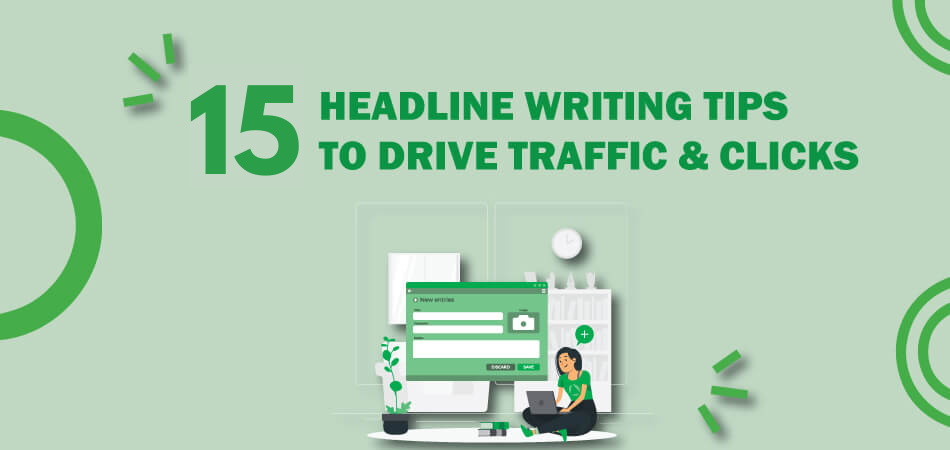From the early days of SEO, the meta description is considered an important part of website optimization. However, Google doesn’t consider the meta description as a direct ranking factor, but a good meta description drives more traffic to the page.
Since your page gets more traffic, Google ranks your position up, as a result, your CTR and sales get improved. On top of that, when you write an awesome meta description, it will change the perception of the users about your page.
Therefore, it is essential to create a good meta description for optimizing your page with On-Page. Thus, I’ve come up with this guide to show you how to create awesome meta descriptions with its SEO best practices. So let’s start.
What is the Meta Description?
Before talking about the meta description best practices, it will be better to have a bit of an idea about the meta description. Well, the meta description is a brief summary of the content. It’s a great way to tell about the content and what it will offer to the users.
As you can see, on the search results page, the meta description is shown below the page’s clickable blue link. It gives a more accurate idea of what the content is about in a specific way. Simply put, it’s the specific description of what the web pages offer.
The meta description acts as an opportunity for you to convince the users to click through your guide. Through screening the meta description, if the searchers perceive that it will satisfy them they enter the page, otherwise, they don’t.
Benefits of Meta Description
If you can write a remarkable meta description, it will provide you with many benefits. Though there are no direct SEO benefits like ensuring a top-ranking position, it will surely increase the traffic, CTR, conversion, and sales.
So, the benefits of the meta description are as follows:
- Make Positive Impression: It is generally a mini ad for your webpage which is shown on the result page, that users read out before entering the page. In that case, a well-written and properly optimized meta description can lead to a positive impression on the users.
- Increase Click-Through-Rate: When the users are impressed by the well-written meta description, they are more likely to click the link. A study by backlink stated that pages with meta descriptions see an average of 5.8 percent more clicks than pages without. That means the meta description is directly responsible for increasing the click-through rate.
- Reach More Traffic: Since a well-optimized meta description can increase the CTR, there is a huge chance of improved ranking also. This way, through the improved ranking, you can get more traffic.
- Potential Conversion: When you managed to improve CTR and reach your targeted traffic, you can automatically increase the conversion.
How to Create Awesome Meta Descriptions
If you don’t have any meta descriptions, Google makes them based on your page’s content and the searchers’ queries. But it may not be perfect to grab much attention from the users. When the well-written meta description gives you many benefits, so why do you miss the chance?
So here are the tips for how to create awesome meta descriptions for your web page.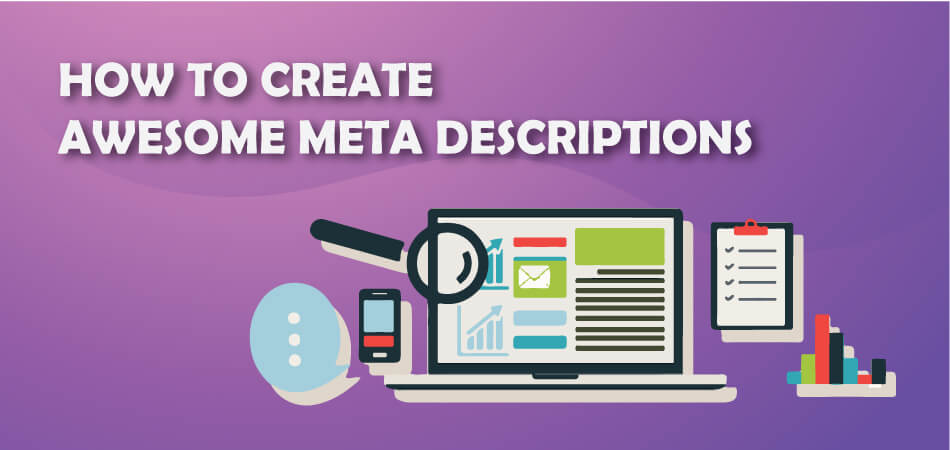
1. Write Compelling and Benefit-Driven Copy
You need to imply the benefits your readers will get from your page through the meta description. It should be clear, distinct, and to the point. The benefit will depend on the content of that page. 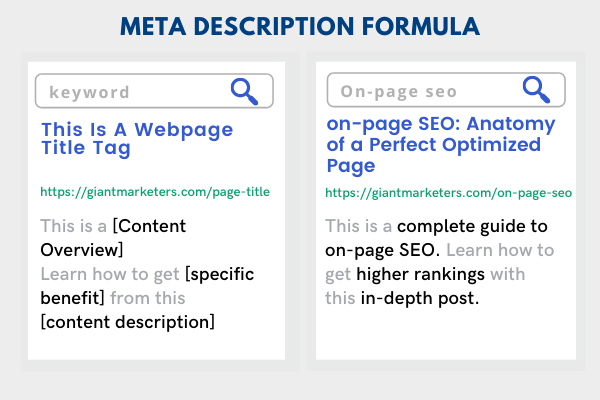
So, highlight what the users will learn from your guide. Also, note that the meta description of a service page, blog post, or homepage, won’t be the same. Therefore, it is crucial to keep in mind creating meta descriptions matching the content.
2. Keep it Within a Standard Length
The length of a meta description depends on what you want to tell the users about your web page through it. But Google recommends that the meta description length should be within 150-160 characters.
Well, the limit does not depend on the characters, rather it is measured by pixel size. Technically, Google truncates meta description above 920 pixels, and staying under 160 characters works well with this pixel.
So when you keep the meta description within the length it will properly display on the result page, otherwise, the additional words will be cut off.
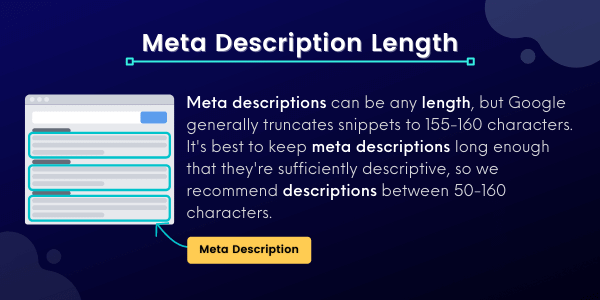
At the time of writing the meta description, consider keeping only the important information. This has less chance to be cut off by the search engines.
Tools to measure the length-
3. Use target keywords
To get the solution to their problems, learn new things, or get some information, usually searchers use some terms in their queries which are known as keywords.
We all know that using the target keyword in the content is a must, and the same goes for meta description also. Mentioning the target keyword once in your meta description is crucial. Here’s why-
- Including keywords in meta descriptions helps search engines and users to understand the page easily.
- Make the link more inviting to the searchers to your site.

- It helps to get more clicks. As you noticed, Google and other search engines sometimes highlight the relevant keywords bold in the meta description. The bold keywords quickly draw the attention of the searchers and when they see that it matches their query they click through it.
For example, your target keywords are Wedding Dresses. When the searchers search for the keywords Wedding dresses, the search engines highlight the keywords wedding dresses with bold from your meta description. For this, it can easily draw attention to the users.
So target your keywords then make the content based on these and properly use it in your meta description.
It’s important for you to note that using keywords in the meta description does not help your ranking directly. Rather, it will create value for the users.
4. Don’t Repeat the Keywords too much time
The practice of using a particular keyword many times is known as keyword stuffing. It’s not only bad for SEO but also annoying to the users.
In the previous section, I have already discussed that Google and other search engines highlight the keywords with bold in the meta description. So it’s a great opportunity for you to grab much attention from the bold words which are matched.
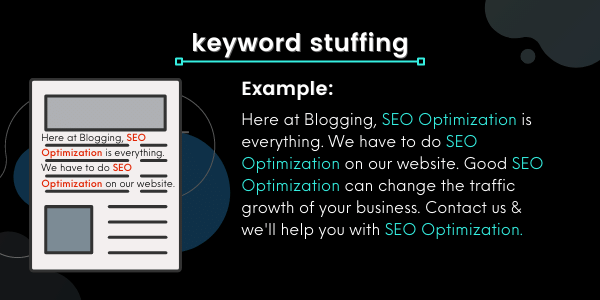
So what do you perceive now? Is the keywords staffing give you any benefit?
Of course not.
If you use the same keywords many times in your meta description, the users will consider it nothing but chattering.
So using target keywords within the meta description is good for your page if you use it just once, otherwise, it can be worse.
5. Create Unique Meta Description
When it comes to creating meta descriptions, it should be unique. There are two things to consider while writing a meta description-
- Make sure not to copy others’ meta descriptions.
- Create unique and relevant meta descriptions for each page of your site and do not use duplicate meta descriptions.

Let me clear this with an example, your content is unique but for the identical meta description, it appeared to users that all the pages’ content is the same.
So it creates nothing but a lower user experience, which will ultimately impact the pages’ rank. Also, this will create a negative image to the users because they’ll perceive that since you copy the meta description from others, you’ll also provide copy content or low-quality content.
However, the unique meta description will give you many benefits. It creates a positive impression on the users, increases the click-through rate, and drives more traffic.
So, better you should write the unique meta description for each page, otherwise, it’s better to keep it blank.
6. Include a CTA
You should treat your meta description and a piece of your customer’s journey. And, using a call to action (CTA) is a best practice to create a great meta description.
Phrases like learn more, comprehensive guide, read on, get it now, click here, or shop now helps readers to understand what the page offers. CTA helps your audience to get an idea about the page and what they can expect.
See the following example, here Automattic on LinkedIn asked customers to join LinkedIn for free to apply at Automattic. 
7. Add Value to The Meta Description
Including valuable words to describe your content is a great way to entice or influence viewers to click through your guide. While creating a meta description, you should consider using valuable words that can offer a general idea to the users that this page is worth their time.
For example, when writing a meta description fusing words like “learn,” “see,” “watch”, “best,” “deal,” “new” or “popular,” helps it to be more compelling.
8. Implement Structured Data
Structured data are the HTML tags that you can apply to your website to provide some additional context. You’ll find several ways for implementing structure data meta tags such as business name, product description, address, reviews, ratings, and many more.
Among all these, using reviews and rating as structured data is one of the most popular options. This leads to a positive signal to the viewers that they are going to see something valuable on this site.
9. Use the Current Year or Month
Using current year and month makes sense only if the content is super time-sensitive, otherwise, you can avoid this part.
Some content needs to be super up-to-date and thus, it requires including year or month to make it more relatable. Suppose, someone is searching for the best SEO tools in 2021. In that case, readers will prioritize the updated content with a meta description mentioning the year.
But, there is a downside of using year or month in your meta description and this is, you need to change the year manually every year. However, in terms of the boost in CTR, this downside is absolutely worth it.
10. Never Trick the Audience
You should use the meta description to encourage the readers to click through your page. While doing this, you must consider doing it in an ethical way.
Never try to promote your content or attract the attention of users using any misleading language, outrageous claims, and unrelated copy or incorrect statements. This will lead your readers to get disappointed and leave the page immediately which ultimately impacts your SEO rankings negatively.
However, when search engines find out that the content on a page doesn’t match the page’s meta information, search engines may penalize the site.
Plus, the high bounce rates will send negative signals to search engines, telling them that it is a bad or useless page.
Conclusion
A meta description is really short, but this short description has some huge impacts on your page’s user experience. A great and well-optimized meta description acts as an advertising copy for web pages.
It is an important on-page SEO factor that helps draw the users’ attention to your web pages from the result pages. When you provide an attractive description along with the targeted keywords and keep it within a standard length, it will definitely create a positive impression with a higher click-through rate.
Hopefully, these writing tips will provide you with useful knowledge to write an awesome meta description and increase the click-through rate.
Let me know if you have applied these tips to create meta descriptions, or if you have any queries about this topic in the comment section below.


